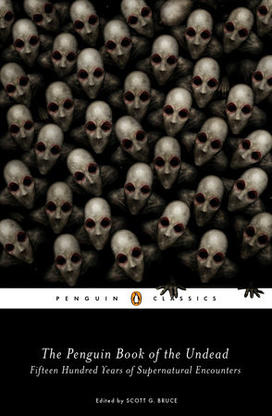Zombies, Ghosts, and Spirits Through the Ages with Scott Bruce *00
The book: Ghost stories, as we know them, did not develop until the Victorian Era, but tales of the undead have been found in writings from the Roman empire, the Hebrew Scriptures, Scandinavian sagas, medieval Europe, the Renaissance, and today there is a global market for horror movies and television series.
The Penguin Book of the Undead: Fifteen Hundred Years of Supernatural Encounters, is a collection of ghost stories from historical narratives, theological texts, and personal letters through the centuries. Scott Bruce *00, editor, has assembled an array of dead warriors, walking corpses, moaning phantoms haunting, and zombies with pestilential breath to chart humankind’s fascination with restless souls and to explore how humans perception about the afterlife has changed, and remained the same, over centuries.

Opening lines: “The word undead first appeared in the tenth century, when a Christian preacher named Aelfric of Eynsham … employed its Old English ancestor—the adjective undeadlic — to describe the immortality, the undyingness of God. The term has undergone an ironic reversal in modern English, where it now denotes dead people who have been reanimated by a supernatural force. This change reflects the intense interest in tales of the living dead that have become ubiquitous in modern society.”
Reviews: Library Journal says, “It succeeds well as an education in how stories of wandering spirits have reflected throughout history common human anxieties about death, the disposal of mortal remains, and the fate of the soul.”












No responses yet